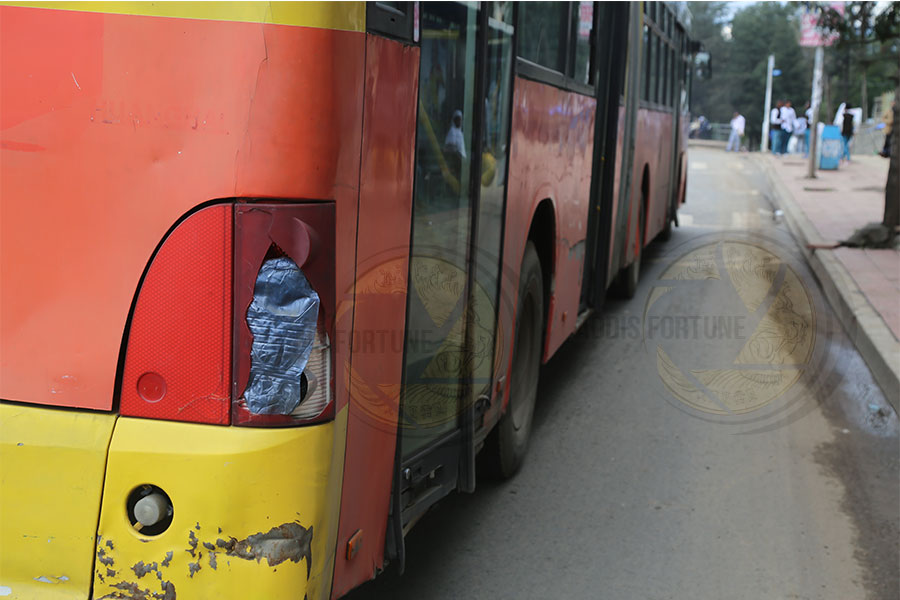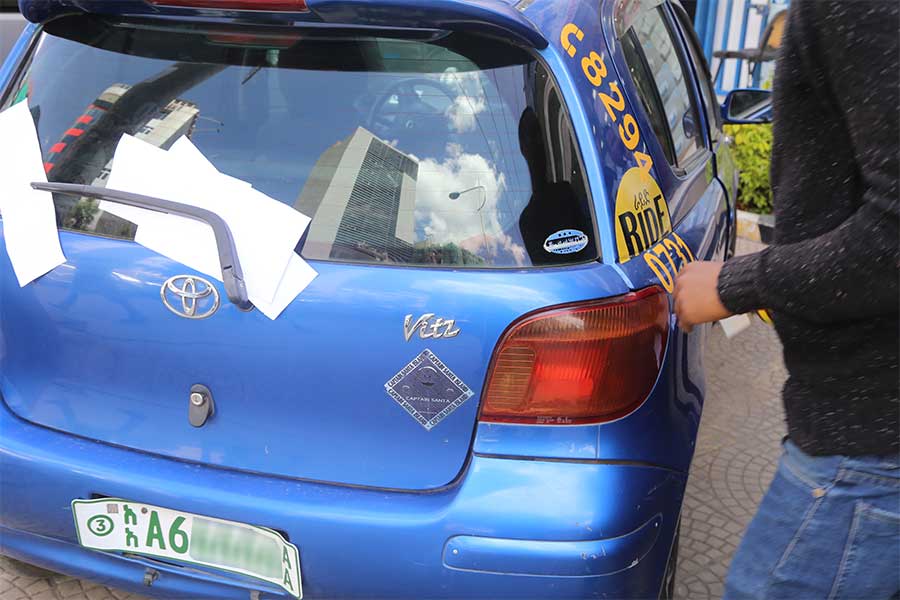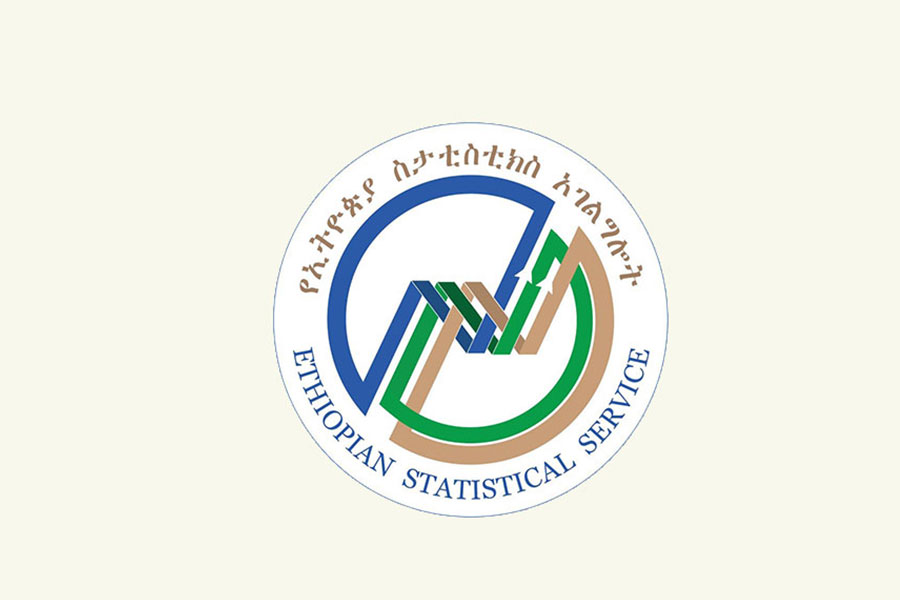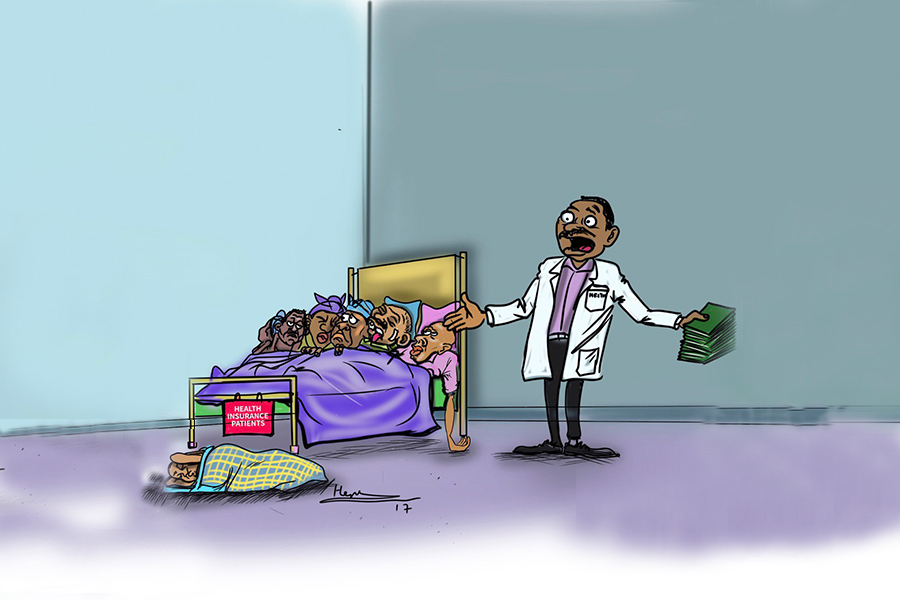
In-Picture | Jun 08,2019
The early morning chill hardly bothers Yeshareg Mesfin anymore. The 28-year old wakes up at the crack of dawn each day and leaves her home in the Meri neighbourhood, near the CMC area, before many of Addis Abeba's residents have been shaken from their slumber.
Leaving her young son at home, Yeshareg usually makes her way to a nearby ticket station, where she forks over four Birr for a pass to board the Addis Abeba Light Rail. Her destination is the Lideta area, 15Km away. There, she has been running a small business for two years, making and selling coffee in a small, makeshift shop near the Federal High Court on Dej. Bekele Weya Street. It would take her less than an hour to make the trip on an average day. The transportation fee is also affordable, with two cups of coffee sold generating enough to cover two tickets with change.
Yeshareg uses close to 40pc of 300 Br in average daily sales to cover overhead costs, while the rest is set aside for household expenses such as 2,000 Br in rent.
In the past few weeks, however, boarding one of the trains has become a matter of luck. Never mind that Yeshareg hardly fails to arrive at the station early in the morning. Stuffed to the brim, catching the train has become a physical challenge for her.
Last Wednesday, more than 50 people rushing to work were awaiting trains at the station where Yeshareg usually boards. The struggle to enter the first arriving train was overwhelming. Still, squeezing past the wall of commuters is part of her daily scrabble, and Yeshareg was unfazed by the chaos. What did force her, however, to cut her efforts short was the backlash from disgruntled passengers, who pushed her over as she tried to board.
"Although I was desperate, I couldn’t take [this train],” she said.
Despite the large crowds observed at the stations along the rail line, which was designed to serve 80,000 commuters a day, the light-rail service has undoubtedly been of great advantage to the capital's commuters, providing quick and inexpensive transportation.
The 34Km rail line has two lines; the east-west corridor linking Ayat to Tor Hailoch; and the north-south route extending from Menelik II Square to Qaliti. The railway was meant to alleviate the city's transportation shortage and ease traffic congestion. It may have benefited people like Yeshareg, but the service is far from reliable.
Commuters often make their way to ticket stations only to find out the trains are out of commission. The past few weeks have been especially rocky as service was continuously disrupted due to electrical and technical issues. At least, that was what the ticket salespeople told Yeshareg when she approached them each morning in the last few weeks. The inconsistency is particularly bothersome to Yeshareg, who is forced to spend nearly 10 times as much on taxi fares to make it to work and back home when the trains are crowded because most are out of service. The journey often takes two hours or more by taxi. Other options, such as the Anbessa City Bus Enterprise, are not much better.
This station near Megenagna was barren last week as the Addis Abeba Light Rail was out of service due to technical issues. On a normal day, it would have been packed to the brim with commuters looking for an affordable ride across the city.
“I've considered moving my coffee business elsewhere, closer to my home, on several occasions," she told Fortune.
When inaugurated back in 2015, after three years of construction and 475 million dollars in investment, the rail was initially touted as the ultimate remedy for the city's transportation crisis and hoped to ease traffic congestion. It joined Anbessa Bus, which runs a fleet size of 650 buses and serves an estimated 1.2 million commuters daily. The Sheger and Public Transport services, which carry close to 300,000 passengers each day, are also on the list of options for public transport.
Last year, the City Administration spent 1.5 billion Br in subsidies for the bus services.
However, the rail has seen its fair share of disorder in its nearly seven years of operation. In July 2018, over half of its 1,200 employees went on strike, demanding higher wages and better benefits packages. A shortage of spare parts has hounded the Ethiopian Railway Corporation (ERC), the enterprise in charge of the light rail, from the outset after taking over from the China Railway Engineering Corporation Limited (CRECL), which built the railway system with 85pc of the cost covered by a loan from the Export-Import Bank of China.
No less than 41 trains were planned to go operational when the service was launched. Only around half were serving commuters last week, the number often fluctuates due to maintenance works.
Last year, inadequate imports of spare parts and shortages of technicians for maintenance pushed the Ethiopian Railway Corporation to extend contracts with two Chinese consultants tasked to handle such works for the light-rail service. The operation has also been a burden to taxpayers, incurring 4.6 billion Br in losses during its first four years of operation. Those working at one of the 39 ticket stations dotted along the rail have witnessed the inefficiency firsthand.
Two in Megenagna and Tor Hailoch are far busier than the rest, each selling up to 7,000 stubs a day. Another near the Lancia area is much less hectic, selling an average of 1,000 tickets. Over the past few weeks, sales have dropped by more than half.
Fetle, a salesperson at the station who requested her last name be withheld, was not displeased by the lack of crowds. The inactivity has been a source of respite for her, and she was visibly at ease at her job early last week. On the occasion that a customer did walk up to her quiet workstation, she had a quick response ready: "The train will only go up to Meshualekia."
Many would walk away to try and board a minibus instead, which would cost less than the light rail to cover the one kilometre between Fetle's station and Meshualekia.
“It's a big relief for us when we get assigned to less busy stations,” she said.
With the train cutting short at Meshualekia, many were forced to look instead for minibus taxis or buses due to the large crowds, putting more pressure on an already overburdened public transportation system. Authorities at the Addis Abeba Transport Bureau, which is finalising preparations to take over the role of supervising the light rail from the Ethiopian Railway Corporation, claim that commuter-wait times have been cut by more than half the average 45 minutes recorded last October.
Tight supervision and the reinstatement of restrictions on heavy trucks during peak hours have contributed to the smooth flow of transportation services, claims Aregawi Maru, communications director at the Bureau.
Not everyone agrees.
Bekele Daba works as a coordinator at a taxi station around Sidist Kilo. He observed that people stand in line for taxis to Megenagna for an hour on average when traffic is at its worst.
“There are never enough vehicles,” he said.
The authorities claim the estimated 10,500 vehicles, including minibus taxis, are sufficient to provide transportation services to 2.5 million passengers daily. Instead, they shift the blame to the light rail.
“If the trains work at full capacity, it would take the pressure off the public transporters,” said Aregawi.
He argues the space taken up by the rail on some of the city's major thoroughfares contributes to the challenges in public transportation. He has a point. Almost half the width of the roads on the rail's routes is taken up by the tracks, leaving drivers little room to manoeuvre on the busy streets. Close to 70pc of the 1.3 million vehicles in the country are registered in Addis Abeba.
Experts like Engida Tadie, lecturer of urban planning and transportation management at Kotebe Metropolitan University, contend the administration made an unwise move to segregate the city’s light railway from the roads.
“The vehicles and trains could share the same roads to ease the flow of traffic,” he said.
Neither does the expert believe authorities are giving due attention to the city's transportation issues.
The Addis Abeba Roads Authority (AACRA) recently announced it would soon embark on constructing five corridors to ease growing traffic congestion. The routes from Africa Avenue to the British Embassy; Arat Kilo to Abune Petros; St George Cathedral to Dil Ber; Arat Kilo to Brass Hospital; and Ummer Sumeter to the Grand Palace are earmarked for expansion or new construction. Dorsch Gruppe GRE, a German-based firm, was hired for six million dollars in 2018 to conduct design work and feasibility studies for the five corridors. It will also be responsible for the supervision of construction works until 2023.
From Africa Avenue to the British Embassy, the first of these projects is slated to be upgraded for 24.5 million dollars, financed by the World Bank.
However, Engida says the city administration is lacking when it comes to planning infrastructure.
“Addis Abeba isn’t getting the attention a metropolitan city demands,” he said.
Yeshareg and millions of other commuters will continue to wake up each day unsure of whether their most optimal means of transport is available.
PUBLISHED ON
Feb 05,2022 [ VOL
22 , NO
1136]

In-Picture | Jun 08,2019

Agenda | Sep 21,2019

Fortune News | Sep 30,2023

Editorial | Oct 21,2023

Fortune News | Aug 14,2022

Exclusive Interviews | May 17,2025

Radar | Jun 21,2025

Radar | Feb 24,2024

Sunday with Eden | Mar 02,2019

Fortune News | Nov 21,2018

Dec 22 , 2024 . By TIZITA SHEWAFERAW
Charged with transforming colossal state-owned enterprises into modern and competitiv...

Aug 18 , 2024 . By AKSAH ITALO
Although predictable Yonas Zerihun's job in the ride-hailing service is not immune to...

Jul 28 , 2024 . By TIZITA SHEWAFERAW
Unhabitual, perhaps too many, Samuel Gebreyohannes, 38, used to occasionally enjoy a couple of beers at breakfast. However, he recently swit...

Jul 13 , 2024 . By AKSAH ITALO
Investors who rely on tractors, trucks, and field vehicles for commuting, transporting commodities, and f...

Sep 13 , 2025
At its launch in Nairobi two years ago, the Africa Climate Summit was billed as the f...

Sep 6 , 2025
The dawn of a new year is more than a simple turning of the calendar. It is a moment...

Aug 30 , 2025
For Germans, Otto von Bismarck is first remembered as the architect of a unified nati...

Aug 23 , 2025
Banks have a new obsession. After decades chasing deposits and, more recently, digita...